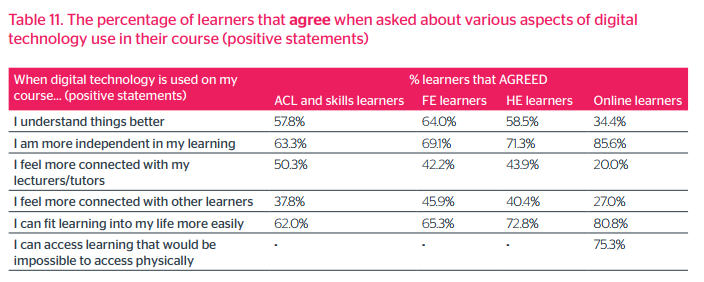- Academic Technology
The Voice Of The Student: Tracking The Digital Student Experience In Higher Education
College instructors and administrators have, over the past decade, largely been the driving force behind increased adoption and usage of lecture capture technology. The specific details of what drew each to lecture capture is often unique to the individual, but on the whole, most have come to the technology as a tool ultimately intended to help improve student experiences and learning outcomes.
The ability to replay a lecture exactly how it was presented is a powerful tool for students working to learn new concepts in college. When lectures are recorded, students can focus on the material being presented without having to take notes. At the touch of a button, they can revisit more challenging sections or the entire lecture. They can speed up and slow down the rate of play, and even review course material on the go on mobile devices.
But what do students really think about having access to recorded lectures and digital course content?
Anecdotal evidence of students’ love for lecture capture can be found all over social media. Here are just a few examples:
I love when professors record the lecture.
— ᴡᴍ saw hoco ☆ 48 (@Lnfinitystone) January 18, 2017
Love them lecturers who not only record the lecture, but give a handout with all the notes on there☺️?
— Anisa (@neeso_x) November 16, 2016
So much love for lecturers that don’t use registers, record the lecture and put it online ?
— Becky Coull (@BeckyCoull) January 27, 2015
Still skeptical? Keep reading — there is new data that tells a similar story.
The JISC (Joint Information Systems Committee), a UK nonprofit that supports higher education institutions by providing research and advice on digital resources and educational technologies, recently released the results from its Student Digital Experience Tracker.
One of the largest surveys performed to date, JISC’s Student Digital Experience Tracker collected extensive data from over 22,000 students across 74 higher education institutions in the UK. And from this data comes a compelling statement on the value of technology-enhanced learning in higher education — delivered in the voice of the students, when it comes to their attitudes towards and usage of educational technologies.
The State of Technology-Enhanced Learning, According To Students
Traditional students pursuing a 4-year degree (HE) and students in continuing education programs (FE) account for 91% of the responses in JISC survey, providing useful insight into how educational technologies provide the most value to students.
When asked to comment on various statements about the use of digital technology within their course of study, 6 in 10 HE and FE students believed that digital technologies help them understand key concepts better and also allow them to more easily fit learning into their lives.

Source: JISC Student Digital Experience Tracker
Student Attitudes Towards Lecture Capture
Not only is lecture capture useful, but it is used — far more than any other digital support tools.
When asked about specific digital technologies, accessing lecture notes and recorded lectures stood out as one of the most popular technologies used for learning. 82% of traditional 4-year college degree students reported accessing digital lecture content at least once a week. Only 5% of respondents said they never used this technology.
Source: JISC Student Digital Experience Tracker
Students who contributed to the JISC survey on digital student experience also put to rest a common myth that they will stop coming to class if lectures are recorded. In fact, learners do not believe that the use of digital technology — for example getting access to course resources and recorded lectures — makes them any less likely to attend class.
How Students Can Influence Digital Learning On Campus
JISC also found that digital activities such as peer-to-peer collaboration, games and simulations, and online quizzing were used far less than they had expected, leading them to conclude that the full benefits of educational technologies have yet to be realized. Their data suggests that there is more opportunity to use learning technology to support more effective pedagogies, like blended learning and flipped classrooms.
So how do students continue to be change agents that influence digital learning experiences that offer them the maximum benefit?
Providing faculty and administrators with open and honest feedback is one of the best ways students can influence the use of educational technologies in their courses. Both the JISC and a recent UCISA digital capabilities report showed a similar trend — 43% of universities are actively involving students digital provisioning and support, and another 38% of colleges say they are working towards this goal.
Curious How Your Lecture Capture Solution Stacks Up?
Some ed tech tools change faster than others. If you haven’t upgraded your lecture capture system in a while, you may be missing out on useful new technologies. Check out these 6 features you should look for in your next lecture capture solution.





